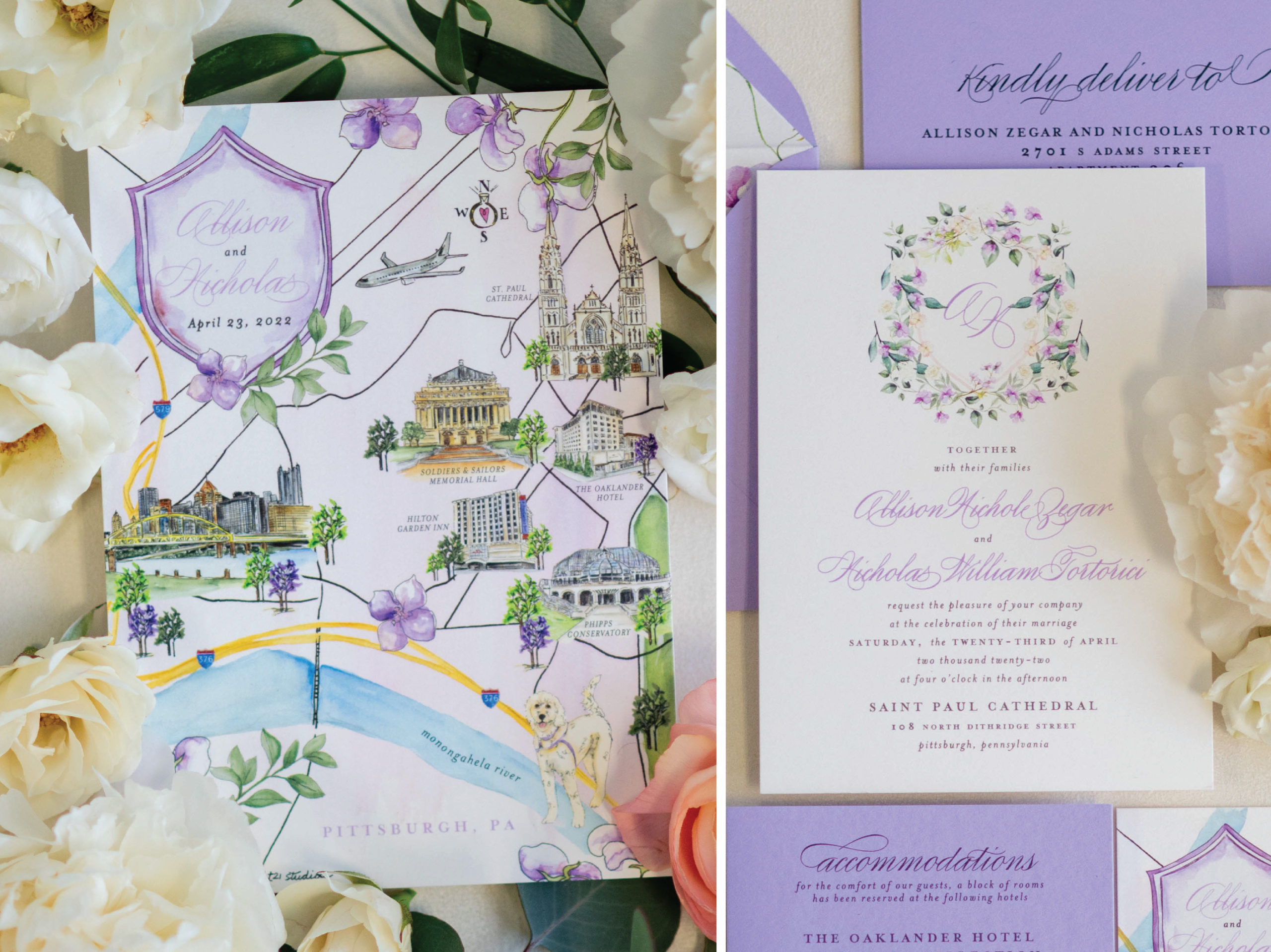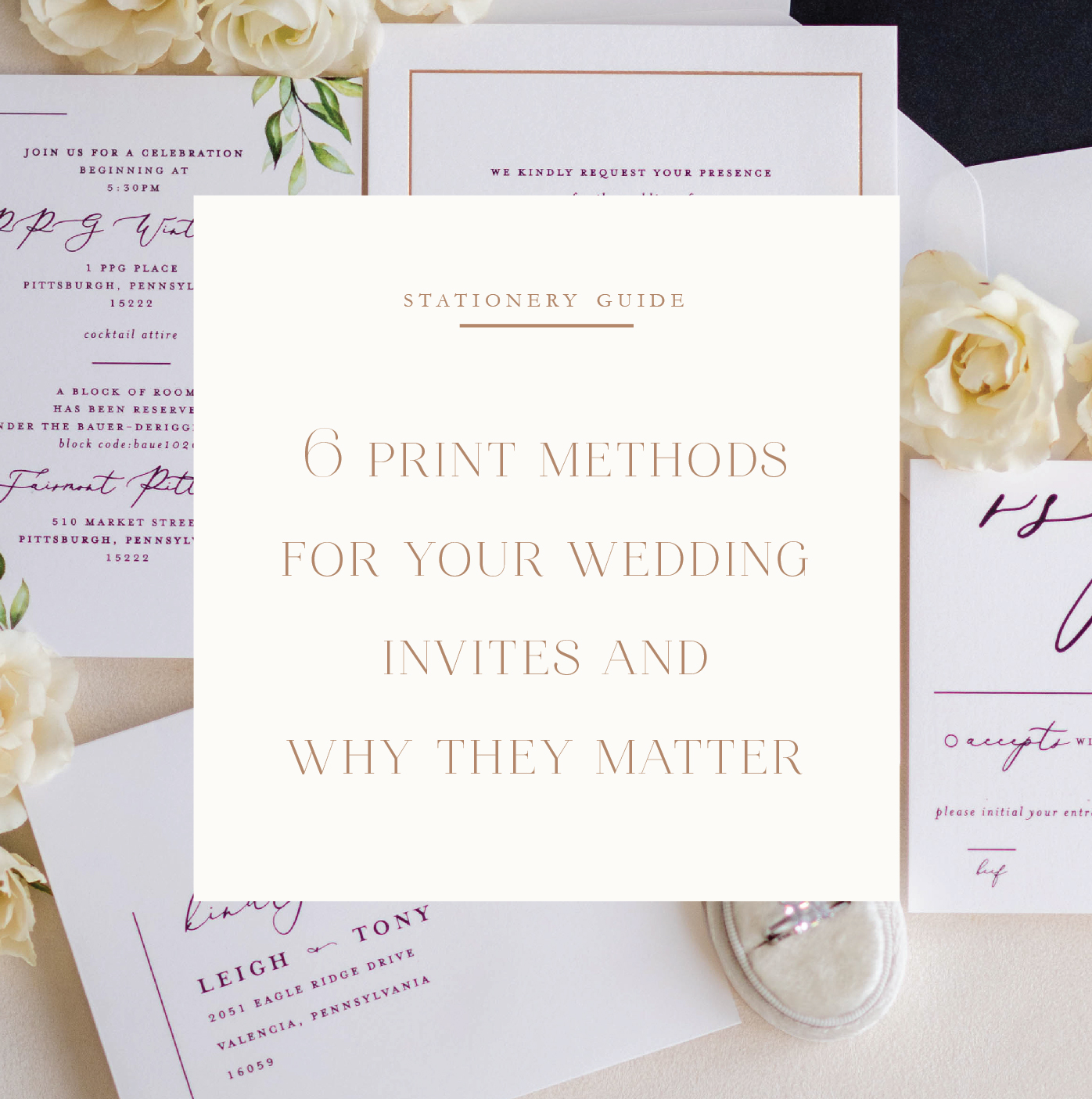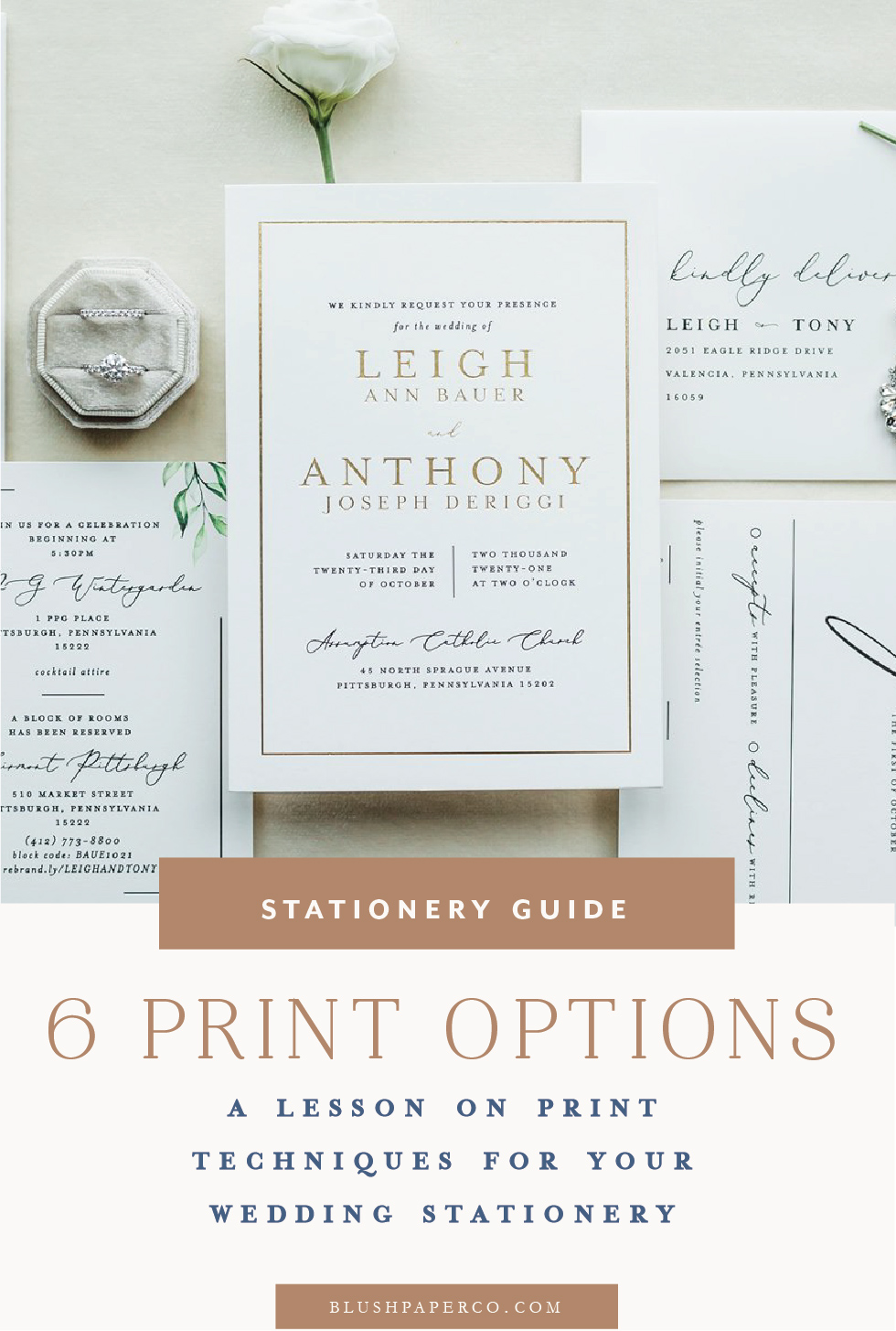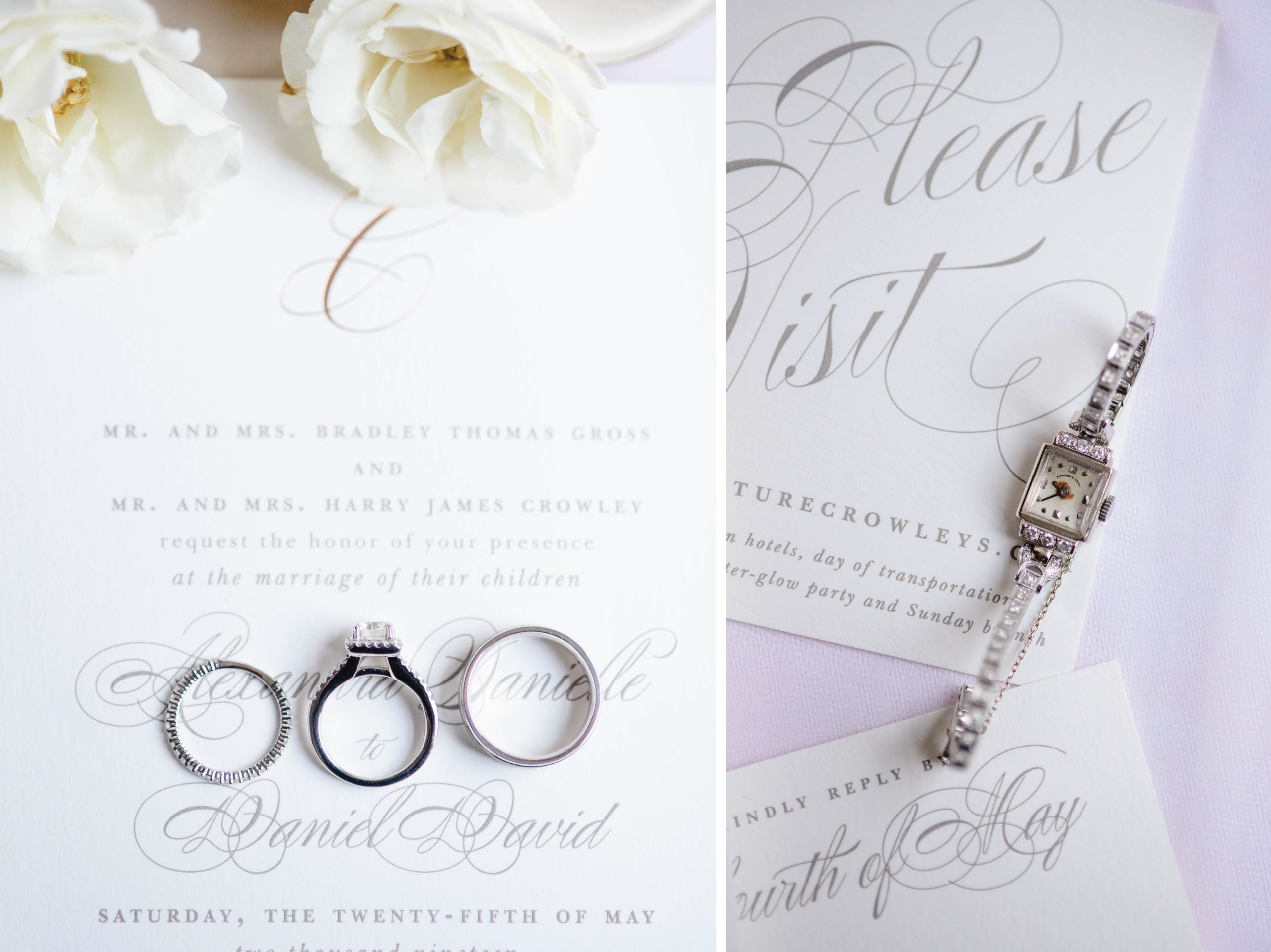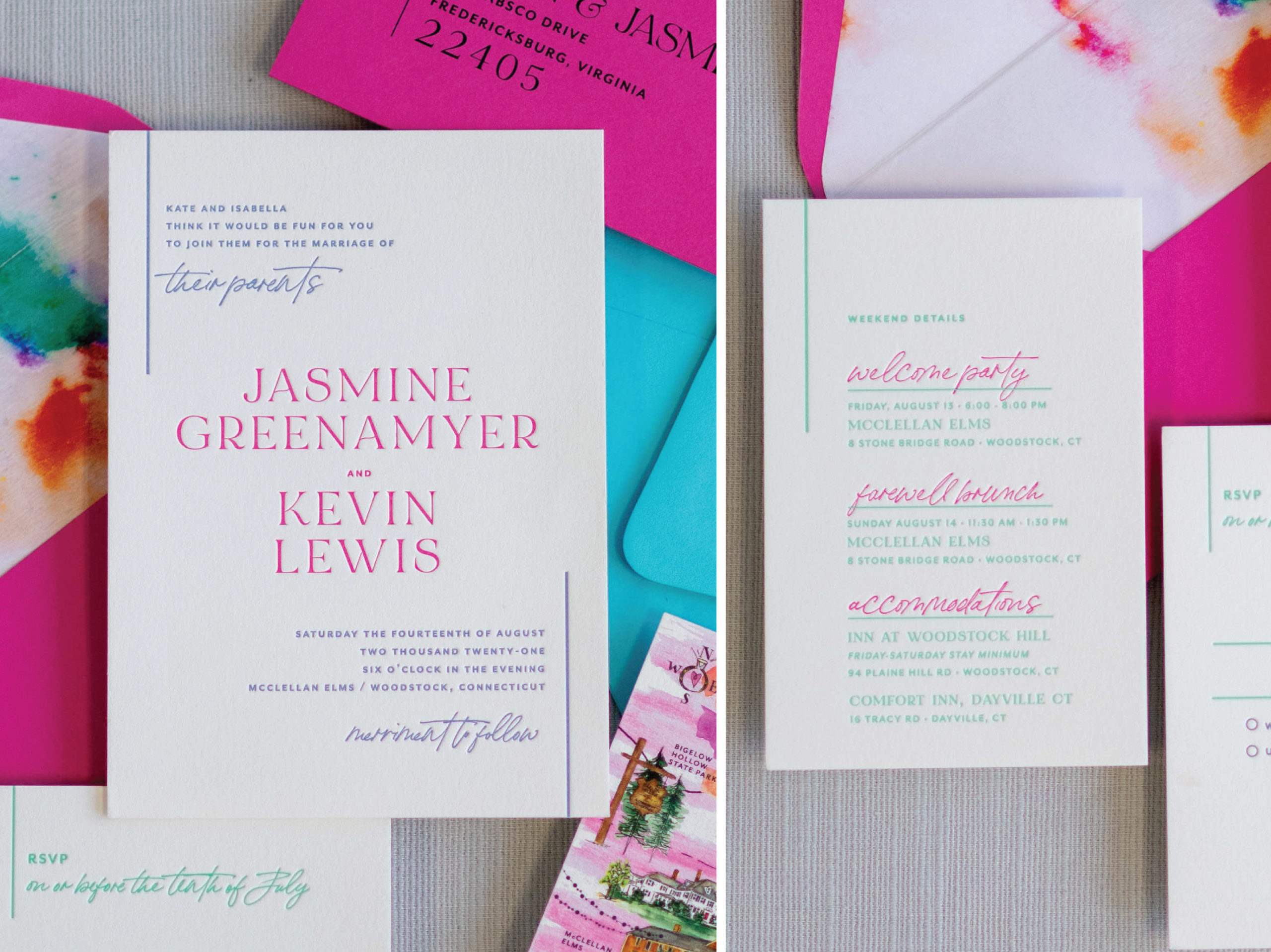March 15, 2022
Engraving
Quick Ratings:
Popularity:⭐️⭐️ ⚪️⚪️⚪️
Design Flexibility Rating:⭐️⭐️ ⚪️⚪️⚪️
Price: $$$$$
The technique of engraving is one of the oldest, finest, and most formal forms of printing, dating back to the 1700’s. The process involves a copper plate that is etched with a design and text (in this case your wedding invitation). The plate is then coated with ink and pressed together with two tons of weight against the invitation.
This creates raised lettering on the front of the card; you’ll feel each character if you run your finger across the back.
When to use it: If you want to signal that this is a super formal affair. And, unlike some other print techniques, engraving also takes well to pairing light type and dark paper.
Limitations: Engraving is limited to line art and text.
Price: It’s costly. A copper plate must be made. Bonus: Most companies will let you keep the plate as a keepsake.
Foil Stamping
Quick Ratings:
Popularity:⭐️⭐️⭐️⭐️⚪️
Design Flexibility Rating:⭐️⭐️⚪️⚪️⚪️
Price: $$
Foil stamping is the only way to add a little bit of shimmer and shine to your invitations. It’s commonly used in small areas, called spot foiling, like on your names or monogram. I’ve also foiled whole invitations on dark paper and it makes such an incredible statement!
Similar to letterpress, foil stamping creates an indentation on the front of the card; you’ll feel each character and line if you run your finger across the front.
When to use it: If you want to incorporate a metallic effect into your stationery, or appreciate the art form that is foil stamping.
Limitations: Foil stamping is limited to line art and text.
Price: It can be costly. Blocks of metal or polymer plates must be made. It’s priced per area, so when used wisely, it can be an inexpensive print method. Don’t rule it out!
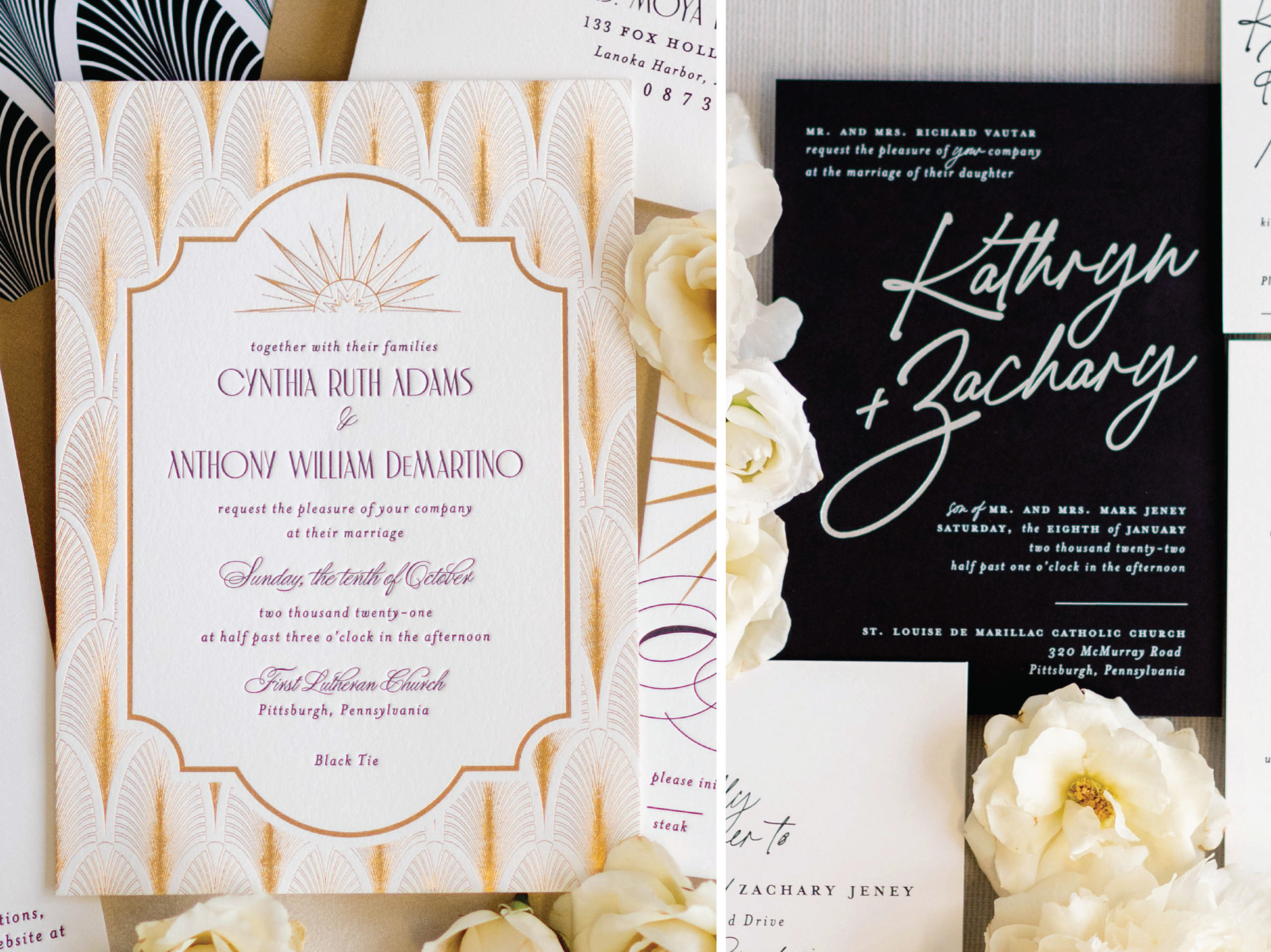
Thermography
Quick Ratings:
Popularity:⭐️⭐️⭐️⭐️⚪️
Design Flexibility Rating:⭐️⚪️⚪️⚪️⚪️
Price: $
A cost-effective alternative to engraving is thermography. This printing technique involves mixing ink with a resinous powder that adheres to the stationery, and is then placed under heat for the resin to melt and fuse with the ink.
Similar to engraving, thermography creates a raised effect on the front of the card; you’ll feel each character and line if you run your finger across the front.
When to use it: If you want an elevated look to your stationery, but not at a high price point.
Limitations: Thermography is limited to line art and text.
Price: Thermography printing isn’t very costly. For a nominal price, it can really elevate the look of your stationery!
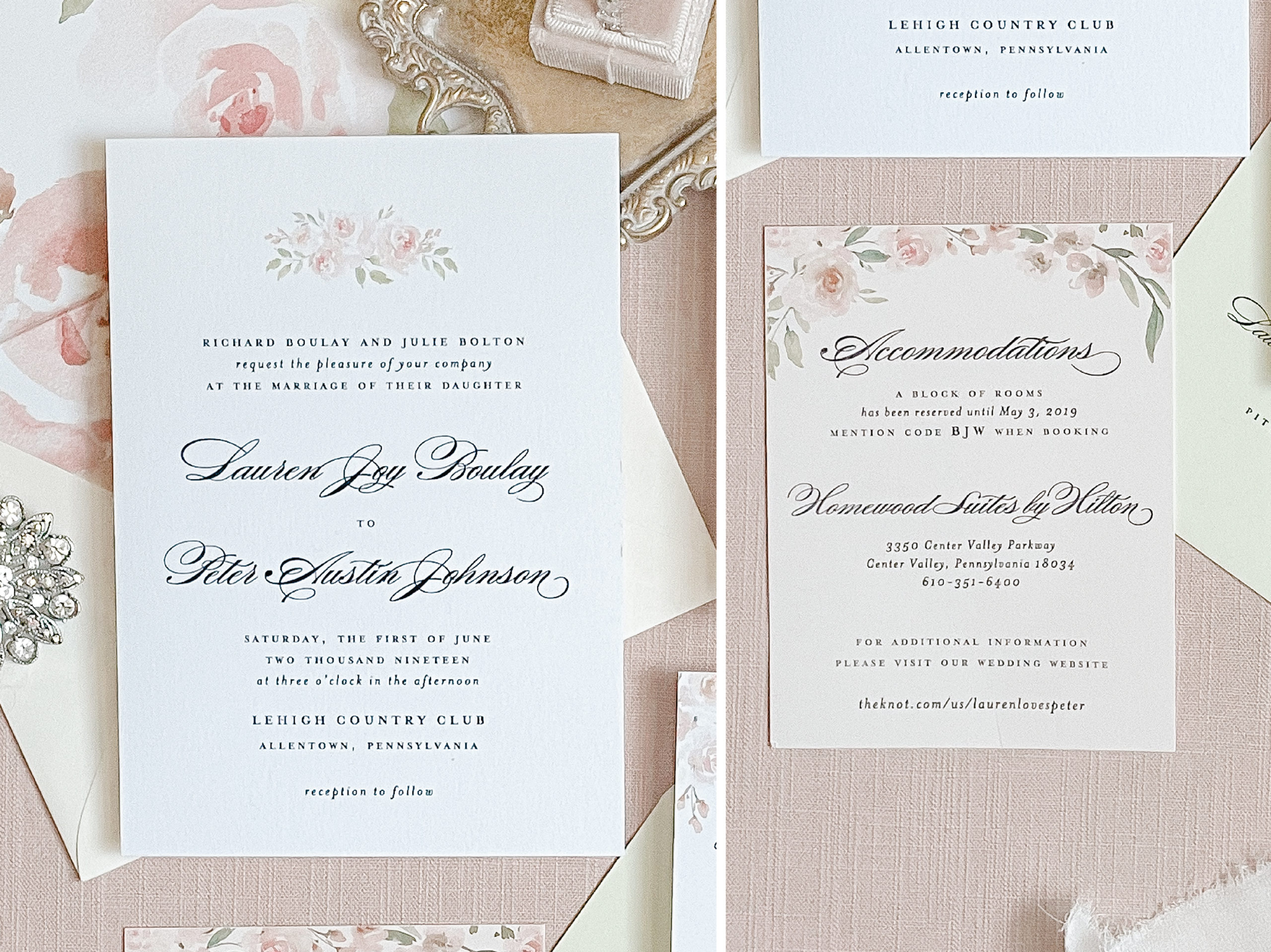
Digital Printing
Quick Ratings:
Popularity:⭐️⭐️⭐️⭐️⭐️
Design Flexibility Rating:⭐️⭐️⭐️⭐️⭐️
Price: $
The most common, and least expensive, print method is digital printing. You’re probably most familiar with this print method, too. Smooth to the surface, digital is a simpler process that prints right from a computer file.
Similar to engraving, thermography creates a raised effect on the front of the card; you’ll feel each character and line if you run your finger across the front.
When to use it: When you want to use an array of colors for one, low price – or you’re printing watercolor art work!
Limitations: None. The sky is the limit!
Price: It’s the most widely used and least expensive print option available.
